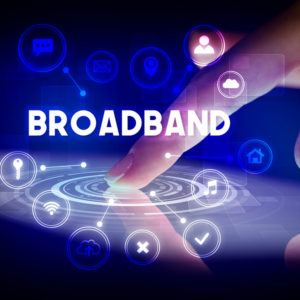Consumers don’t tend to think of data as a finite resource. Instead, the focus of the average smartphone user or online gamer is on how much they’ve paid their wireless provider per month for 5G and “unlimited data.”
But data is not actually unlimited. There is only so much available, a function of what is known as spectrum allocation. The economic model of supply and demand might as well not be applied here because the United States is doing very little to meet present or future demand.
The pandemic shift toward remote work, at-home learning and online retail shopping has on its own been a huge driver of strain on spectrum network capacity, with nothing to say of the coming needs of AI, self-driving cars, and low-Earth-orbit satellites providing internet. Wireless networks carried more data in 2021 than in the entire seven-year span from 2010 to 2017. 5G home broadband experienced a growth rate 140 times faster than all other home broadband options combined.
If we want greater capacity for our connected devices, 5G on the fly, or even just marginally faster cellular networks, the government will have to massively expand the availability bands for our devices to broadcast and receive.
Earlier this year, Commerce Secretary Gina Raimondo iterated that message, unveiling the beginning of a National Spectrum Strategy, which will aim to define the range of spectrum that becomes available for use, and how it will be doled out.
The National Telecommunications and Information Administration will need to identify 1,500 megahertz of spectrum within the next decade or sooner. It is expected this new radio wave real estate would service autonomous vehicles, smart home devices, and “always-on” internet products powering industry and households alike.
There have been surefire warnings that without additional licensed spectrum, U.S. operators will struggle to meet surging wireless demand, facing a spectrum deficit of 400 MHz within the next five years and 1,400 MHz by 2034.
The 4 GHz (4.4-4.94 GHz) band is pivotal in maximizing 5G potential as this band enables a multitude of advanced 5G use cases, from broadcasting to autonomous vehicles, requiring a mix of coverage and capacity. Moreover, auctioning this band aligns with international harmonization efforts, ensuring that the U.S. remains at the forefront of wireless infrastructure development while delivering lower prices to consumers.
Similarly, the 7/8 GHz band presents an opportunity for further deployment of 5G networks and services. Recent research by NTIA reveals it is nowhere near being fully used by federal incumbents, making it ripe for exploration and auction. In this vein, FCC Chairwoman Jessica Rosenworcel rightly calls for the evaluation of the 7-15 GHz spectrum range to deliver faster speeds and wider coverage. That’s even better.
The higher capacity of the 7 GHz band can enable 5G networks to serve densely populated areas, fostering smart cities and private 5G networks for campuses, manufacturing facilities and other crucial institutions.
Recognizing the early positive benefits of opening up the spectrum will be key to giving entrepreneurs and consumers alike a chance to prosper even further down the road. A National Spectrum Policy should keep all of this in mind while remaining steadfast in empowering consumers and bridging the digital divide.
By prioritizing spectrum allocation for licensed, full-power commercial use, we ensure that consumers have access to reliable, high-speed wireless networks that meet their growing demands. It’s a strategy that fuels economic growth, fosters innovation, and secures America’s position as a global telecommunications leader.
In the age of connectivity, consumers deserve nothing less.


